Tattoos of Sub-Saharan Africa
Article © 2010 Lars Krutak
The aesthetics of Fulani tattoos vary from subtribe to subtribe. In Mali, women’s tattooing resembles the bold and dark mouth tattoos of the Ainu of Japan and completely surround and cover the lips in a circular pattern. According to my friend Michael Laukien (aka Travelin’ Mick), Fulani markings are called socou-gol and are pricked into the lips with needles by a throdi or female tattooist. Traditionally, only the lower lip and gum were tattooed with a pigment of charcoal mixed with shea butter when a girl reached puberty. After she had become marriageable, her upper lip was incised but today these practices have been largely abandoned and young women have their entire mouths tattooed before wedlock.
|
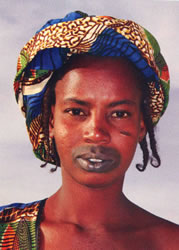
Fulani tattooing in Mali.
Photograph © Michael Laukien.
|
Wodaabe women also wear a similar tattoo on the sides of the mouth, but it is cut into the skin with a razor and resembles a more textured type of scar tattoo.
Other nomadic peoples of the great African savannas of Tanzania, Uganda, and Namibia also possess tattoos and these markings are produced in relief and resemble colored scars. Among the Barabaig of Tanzania and Karamajong of Uganda, these “goggle” tattoos surround the eye sockets of both men and women and are usually pigmented. The tattooist picks up a fold of skin and cuts the tip removing the skin from the body. A charcoal pigment mixed with cow urine is rubbed into the incisions resulting in small bumps that delicately encircle the face over time. Bantu-speaking Chowke women and their linguistic relatives living in Namibia and Angola wore similar designs. |
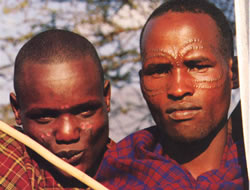 |
Barabaig tattooing of Tanzania.
Photograph © Michael Laukien. |
|
|
Further south, many Bushmen tribes of Namibia and southern Angola cut the skin during initiation or when setting out on a hunt for large game. Using a stone knife or sharp arrow head, an old medicine man made a cut between the eyes of the patient and inserted into it a carbonized pigment with magical ingredients that included the pulverized remains of specific animals. This infusion was introduced into the wounds to give the bearer better sight, stamina, and a more powerful thrust of his spear.
The Kwengo Bushmen placed additional tattoos on important muscles. Special substances were rubbed into the cuts to make the owner more successful on the hunt. For example, the fat from the lower reaches of a slain deer or eland provided the hunter with speed and endurance and were rubbed into the cuts placed on the thighs. If these substances were introduced into marks on the right arm, they strengthened the force of the arm while it tensioned the hunter’s bow. The Nharo placed such incisions between the shoulder blades. |
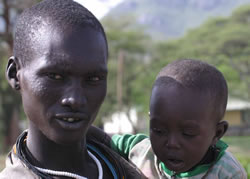 |
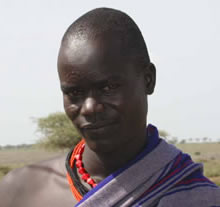 |
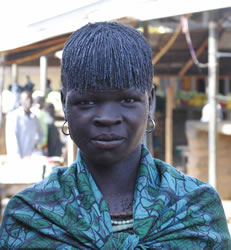
|
Karamajong tattoos of Uganda. Photographs © John Gattorn |
Among the Sekele, old men tattooed a successful hunter in return for an offering of game in order to give him good luck in finding the next buck. A piece of the foreleg biceps of the animal is burnt, and the ash is daubed into the incision.
|
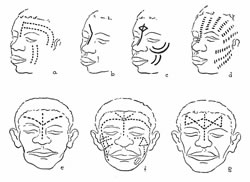 |
Tattooed Sekele and Kwankala Bushmen of southern Angola, ca. 1955 |
Next Page | 1
|
2 | 3 |
4 |
5 |
6 |
7 |
8 |
Museum photo gallery of the images
on this page may be seen here. |






